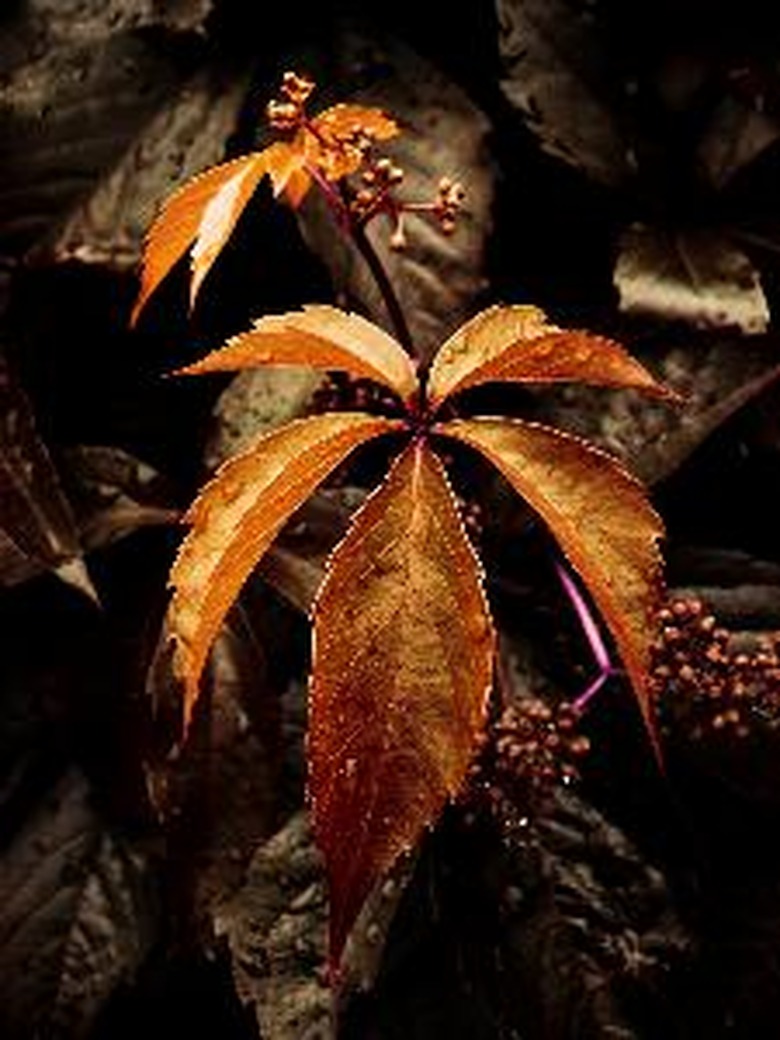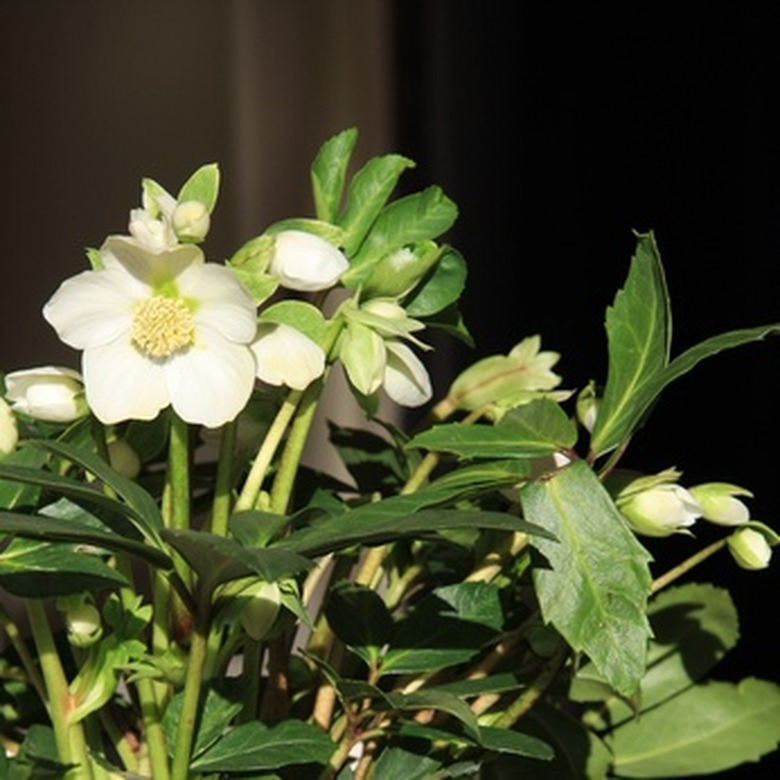What Perennials Have 5 Leaves?
Perennial plants and vines survive year after year, adding color and visual interest to the landscape. Plants can be identified by the formation, shape and position of their leaves. Leaves are one of the most useful tools in plant identification. Several common landscape plants present five leaves.
Step 1
Vanilla-scented five leaf akebia (Akebia quinata) is a vigorous climbing vine that presents purple flowers in the spring, followed by a purple fruit. The flowers present a sweet fragrance similar to chocolate. A perennial woody vine, Akebia grows to more than 30 feet in full sun and well-drained soil. In mild winters, the vine is semi-evergreen, retaining most of its leaves throughout the cold season. Brought to the United States in the 1840s as an ornamental plant, the five leaf akebia climbs by twining itself around trees and other vegetation. Once established, the vine can crowd out native plants. The plant escaped cultivation and naturalized in 16 eastern states. Five leaf akebia is considered invasive in Maryland, Kentucky, Pennsylvania, New Jersey, Virginia and the District of Columbia.
Step 2
Step 3
- Vanilla-scented five leaf akebia (Akebia quinata) is a vigorous climbing vine that presents purple flowers in the spring, followed by a purple fruit.
Clover
Step 1
Clover (Trifolium) is found in every hardiness zone in the United States. Dutch clover has three leaves, but four-leaf and five-leaf clovers are relatively common. Many species of clover also grow in Africa and South America. Clover is used as animal fodder and as ground cover to fill in bare spots in the landscape. Clover is often found in grass seed mixes. Clover is fragrant and presents red, pink, yellow or white flowers in summer. Clover attracts bees and butterflies to the home garden.
Step 2
- Clover (Trifolium) is found in every hardiness zone in the United States.
- Clover attracts bees and butterflies to the home garden.
Ivory Prince Helleborus
Step 1
Helleborus "Ivory Prince," also known as Lenten rose, presents five leaves in clusters on leathery stems. Perennial helleborus leaves appear while snow is still on the ground and hold their shape and form throughout the summer and fall. The flowers exhibit five white petals and a bright yellow center.
Virginia Creeper
Step 1
Perennial Virgina creeper (Parthenocissus quinquefolia) adds color, scent and visual interest to urban landscapes and rural gardens. The plant takes up little space in the soil and climbs to cover walls, fences and barren spots in the landscape. Virginia creeper requires little care or maintenance and is easy to grow. It is effective in helping control erosion. Virginia creeper — also known as woodbine, American ivy, false grape and five finger vine — develops a bright red berry in the fall that is toxic to humans and can be fatal if consumed. Keep this plant away from small children. The berries are not toxic to wildlife and are consumed as a favorite food of birds, squirrels and rodents. Virginia creeper is often confused with poison ivy, but eastern poison ivy has three leaflets and Virginia creeper has five. Western poison oak (Toxicodendron diversilobum) normally has three leaflets, although some species have five. If in doubt, do not touch the plant.
Step 2
Step 3
- Helleborus "Ivory Prince," also known as Lenten rose, presents five leaves in clusters on leathery stems.
- Perennial Virgina creeper (Parthenocissus quinquefolia) adds color, scent and visual interest to urban landscapes and rural gardens.

